The Chatham Arts Council is investing in artists through our Meet This Artist series, introducing you to 12 Chatham County artists each year in a big way. The fine folks at Hobbs Architects in downtown Pittsboro are powering our Meet This Artist series this year. Architecture is art, and the Hobbs crew values art in our community. So, take a look. Meet your very inspiring neighbors. Meet Chef Sera Cuni of Café Root Cellar, culinary artist and community leader.
In this interview with Chef Sera Cuni of Cafe Root Cellar, Sera shares her culinary journey–from being inspired by the chefs of her youth to her commitment to using fresh, local ingredients. She discusses the art of cuisine, emphasizing that it’s driven by love and creativity, not just formal education. And when Chef Sera talks about the Feed-Well Fridges initiative, the access and welcome and inclusion that are hallmarks of so many artists’ work comes tumbling out. I left our conversation feeling all filled up. Give it a read, and head over to Cafe Root Cellar. I suspect you’ll leave feeling full, too.
Do you remember how old you were, or at what point you decided, “I love this. This is my passion”?
I grew up in an Italian household, so I grew up cooking from a young age and eating good food from a young age, but it wasn’t until I went to Epcot at Christmas and saw these chefs in their white hats and their jackets. They were in front of a gingerbread house, and I was like, “That is so cool, and I want to do it!” I was probably 10 to 12 years old.
For my generation at that point, there weren’t many culinary schools; there weren’t the community college programs. And I still wanted to play college soccer, so there wasn’t anywhere to go for that unless you went to one of the bigger schools. (While I was in college, I was a fine arts major. I did stone sculpture and ceramics and pottery–a lot of everything.) But I had an injury when I was a sophomore, and I was like, “Screw this, I’m leaving, I’m going.” My parents were in Connecticut, and I got there and told them, “I’m going to culinary school. There’s one in Connecticut.” It was just the perfect fit! I was not a good student, but when I got there, I knew this is what I was meant to do.
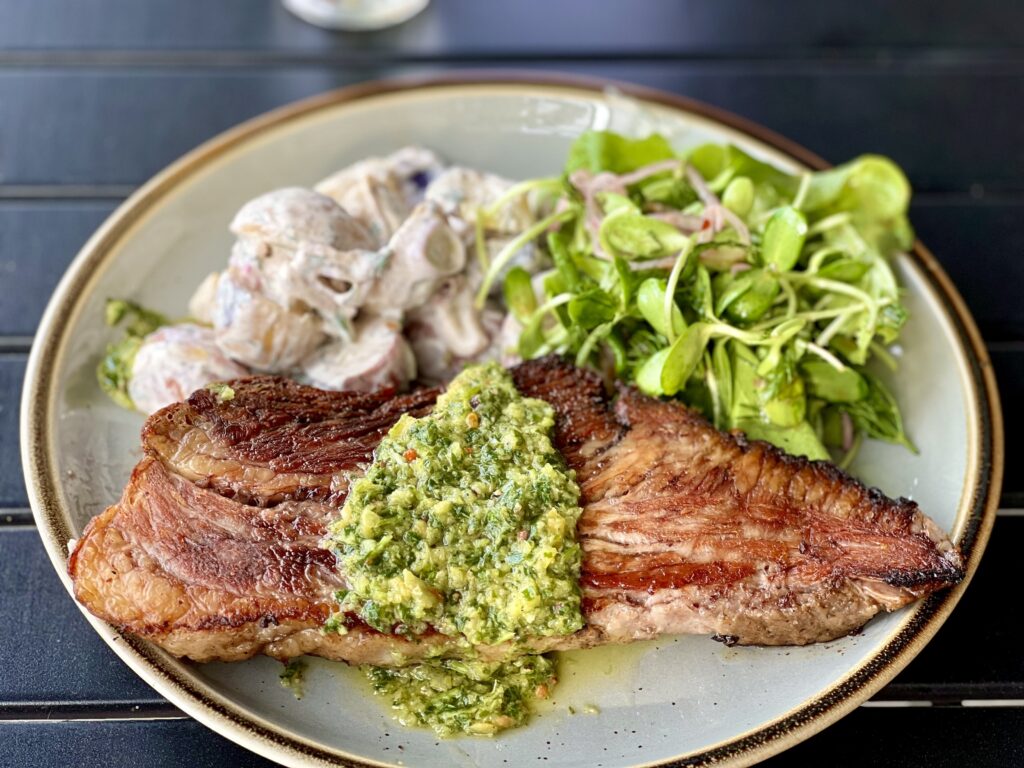
So, there’s formal education, and then there’s the education of learning as an apprentice on the job. Did you have professional mentors that helped you along the way?
Sure. I went into a restaurant, and I said, “Here’s my application. I want to work.” And the guy told me, “You’ll never work in a kitchen. You’re a girl. You can be a server.” So I walked out.
There was this really great restaurant in town called Main and Hopewell, and I was like, You know what? I’m just gonna go. Even if I’m a dishwasher, I’m gonna go. I walked in, and they told me to come back the next day. I came back, and my first day I peeled–I think it was baby artichokes–for five hours. I just sat there peeling baby artichokes. The next day I went back, and I cleaned fiddlehead ferns, and I came back the next day and they’re like, “All right, we’re going to let you do the garde station,” which is the salad and the cold apps.
They were young. It was two guys and a girl. They were all in their twenties, and I was 19 at the time. So I mean, they were older–they were older to me–but they weren’t really that much older when you think about it. And they just kind of took me under their wing. I’d go to school in the morning, then come in to work and they’d be like, “What’d you learn today?” I would tell ’em what I did, and they were like, “No, no, no. That never works in restaurants. This is how you do it. Oh, you have to make hollandaise? Here’s an easier way to do it. Same thing, but easier.” I was learning more from these three chefs, who had worked in a lot of great restaurants in Hartford, than I was from my instructors. And they instilled in me this training of others and bringing people up, showing somebody how to do things.
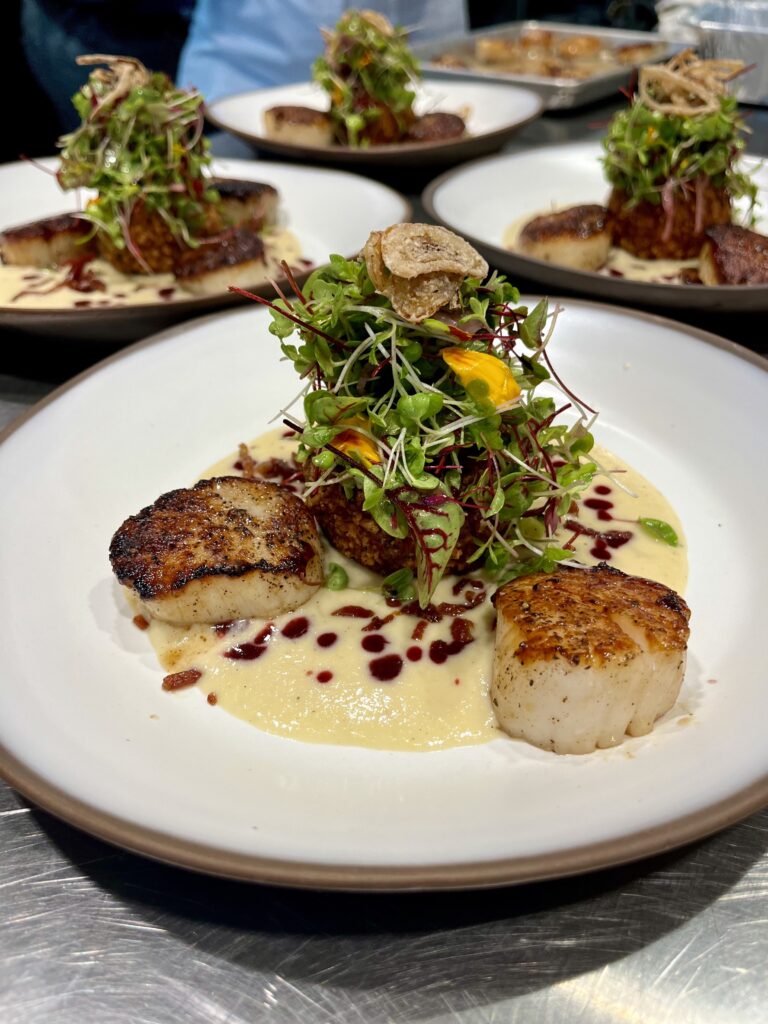
I came down here to NC and worked at Fearrington, and then I got a job with Sara Foster. She really ingrained in me the use of fresh, local, and seasonal foods. I feel like she was ahead of her time. Now, of course, everybody does that. She’d be like, “No, no, no, we’re not gonna put tomatoes on our sandwiches in January! They aren’t any good.” This was almost 20 years ago. Now you can get a decent tomato in January, but back then you couldn’t.
I had always worked in fine dining, and then I went to work for her. And it wasn’t fine dining, and I wasn’t sure if that’s what I wanted, but she showed me that good food doesn’t have to be expensive. Good food doesn’t have to be super fancy. There’s nothing wrong with a good shrimp and grits. Sure, you can make it fancy by putting fancy things in it, but it’s really shrimp and grits and some vegetables. You don’t have to put in truffles and things like that to make it over the top.
That’s a good segue. We are an agricultural county. Tell me a bit about finding fresh, local ingredients.
I am not from here, but I love Chatham County. I call it home. I’ve been here 20-some years, so it’s the longest I’ve ever lived anywhere.
And I really like our community. The farmers here are great. It means a lot to know that I can call Ben (In Good Heart Farm) over at Pittsboro Farmers Market and see what he has this week. Or I can call Tucker and Mackenzie (Lilly Den Farm) and be like, “I need sausage for this weekend.” And they’re like, “We got you. Come on. Come and get it.” Then my money is kept in my county. I’m supporting them, and they’re supporting somebody else. When they buy hay or feed, they’re buying it in the county.
It means a lot to use stuff that’s already here. It seems silly for me to get something that comes from across the world and then have it shipped here just because it’s trendy or whatnot.
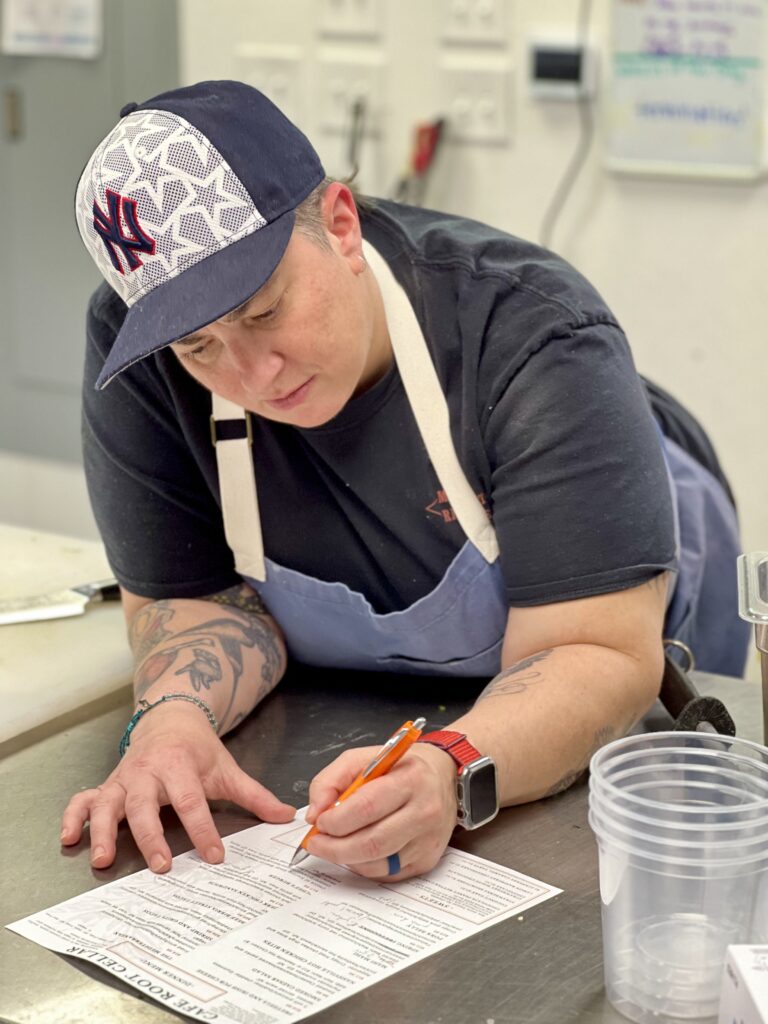
People want their avocado toast.
I know they want their avocado toast. And I mean, yeah, there are some things we can’t get locally, but I just think it tastes better when I know where it’s from. I know it was picked probably yesterday, and then I’m putting it on a plate today. Instead of a turnip that came out of the ground three weeks ago, sat on a truck, came across the country, sat in a warehouse, then got delivered to me. How fresh is it?
When you eat a turnip or a radish that was just picked, it’s so spicy. But the radishes you buy in the grocery store are not. They’re tame. They taste like a potato to me. I prefer local. We have everything we need. Yes, there are some things I can’t get, but that ‘s going to happen. Did you know North Carolina grows rice? We have rice now: Tidewater Grain out of Oriental. They grow rice. It’s great rice! We have everything we need to make good food.
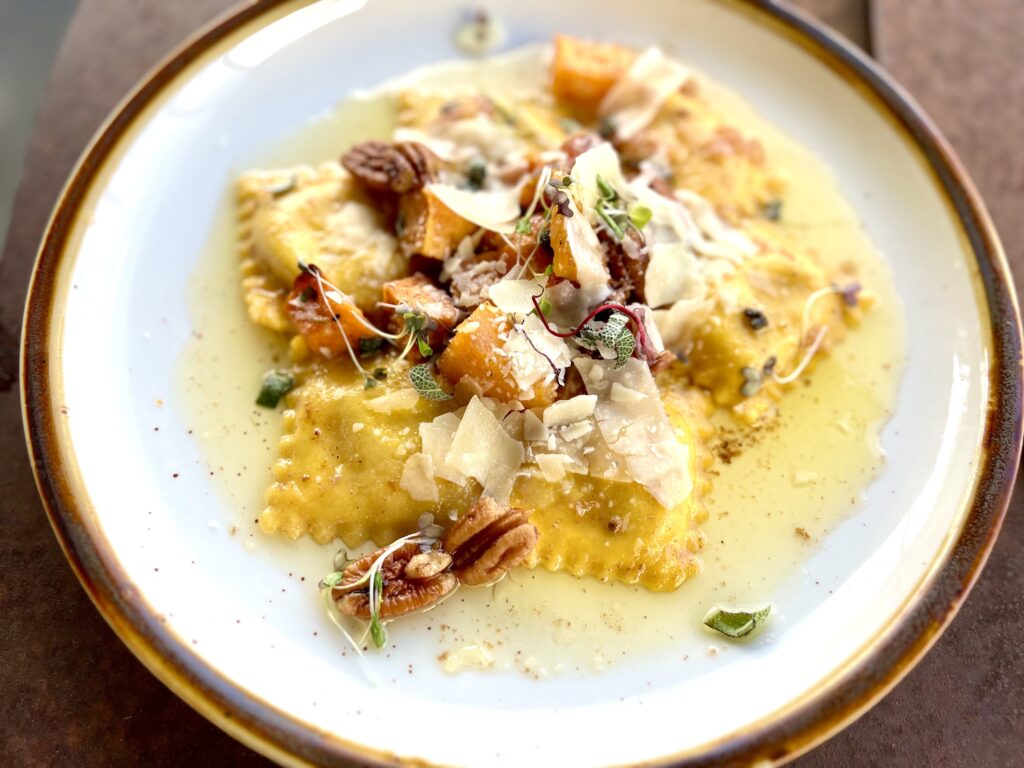
It’s October! What sort of ingredients are you working with right now?
So right now, apples. And sweet potatoes, collards, all the greens, the turnips. Kale is coming in now and all of the squashes.
And of course, it’s braising season. So, I’m doing a braised pork butt from Shipley Farms out near Boone. That’s coming in tomorrow. They’ve been around 150 years, and they still do it the same way. The cows range free all over the mountain pastures. I like their practices. That also means a lot to me. You can taste an animal that has been treated well with no stress versus a stressed animal.
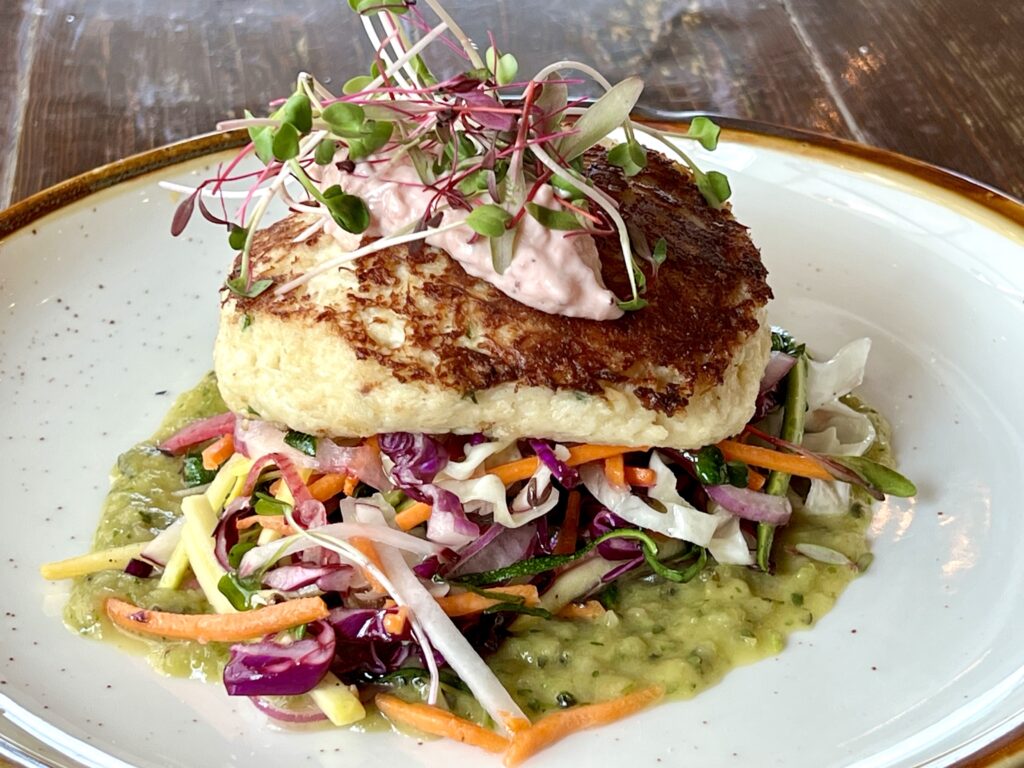
For you, what elevates the practice of cooking to culinary arts?
I think it’s the love. I don’t think you need a degree. I think it’s the love that goes into it. I mean, everybody cooks at home, and I cook for hundreds of people. Not everybody can do that. But I think it’s the love.
And coming up with a recipe, not just opening a cookbook and going, “I’m going to make this chicken pot pie.” We can all paint by numbers, but not everyone can make it up like Picasso. We can follow people on TV, but if I give you seven ingredients and you can make a meal out of it, I would say that’s more of the artistic side. (Now baking is a whole different story. I think you need to follow a recipe, but that’s because it’s more of a science.)
What are your thoughts on presentation and plating?
I like presentation, but when it goes too far to where it looks like it should be hanging on a wall, it’s too much for me. That’s not my style. It never will be. I like my food to look good, but I also don’t want you to go, “Ooh, can I eat that?” Or “Should I eat that?” Or “What is that?” When a carrot doesn’t look like a carrot anymore, that kind of thing. To take something and shape it into a form, take a tomato and make it look like a piece of meat. That’s where I feel that it’s gone overboard. Your food is no longer approachable. I want to be able to have a table with people from all walks of life.
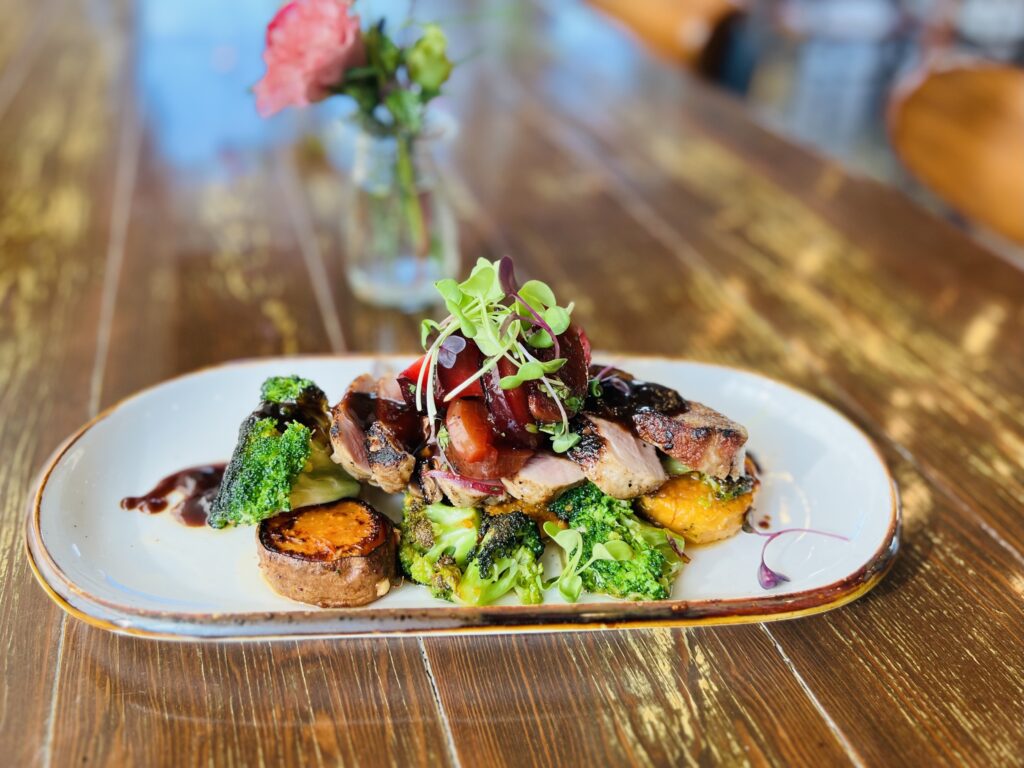
Is there anything else that you’d like the people of Chatham County to know about what you do?
Our new nonprofit, Feed-Well Fridges. It’s been a year in the making. It’s a community-based fridge program where we are fighting food insecurities in Chatham County and cutting down on the amount of food waste in restaurants and grocery stores. We have two fridges right now, one in Pittsboro and one in Siler City, with hopes for a few more coming at the end of this year or early next year.
People will call and be like, “I have this. Can you take it?” Some of the restaurants are donating food that they can’t use anymore. Lowe’s is a huge supporter. We get a lot of food from them. But the biggest, coolest part of it is farmers. They’re the most generous out of everybody, and they have the most to lose. Last night we came home to boxes of dried pasta on our front doorstep. I’m sure it was somebody in our neighborhood. On our website, we say where you can volunteer, donate, or contact us.
I mean, it’s just been an awesome thing. We get messages from people. “Thank you for feeding my family. This has been really hard on us. Thank you so much.” Here’s a fridge that anybody can use. Go in. There’s meals! Take out meals that we’ve made. Just take whatever you need. We could wipe out food insecurity with just the amount of food we waste. I mean, I’m a chef. I feed people who can pay for food. But I want to feed everybody. My table is always a welcoming space.

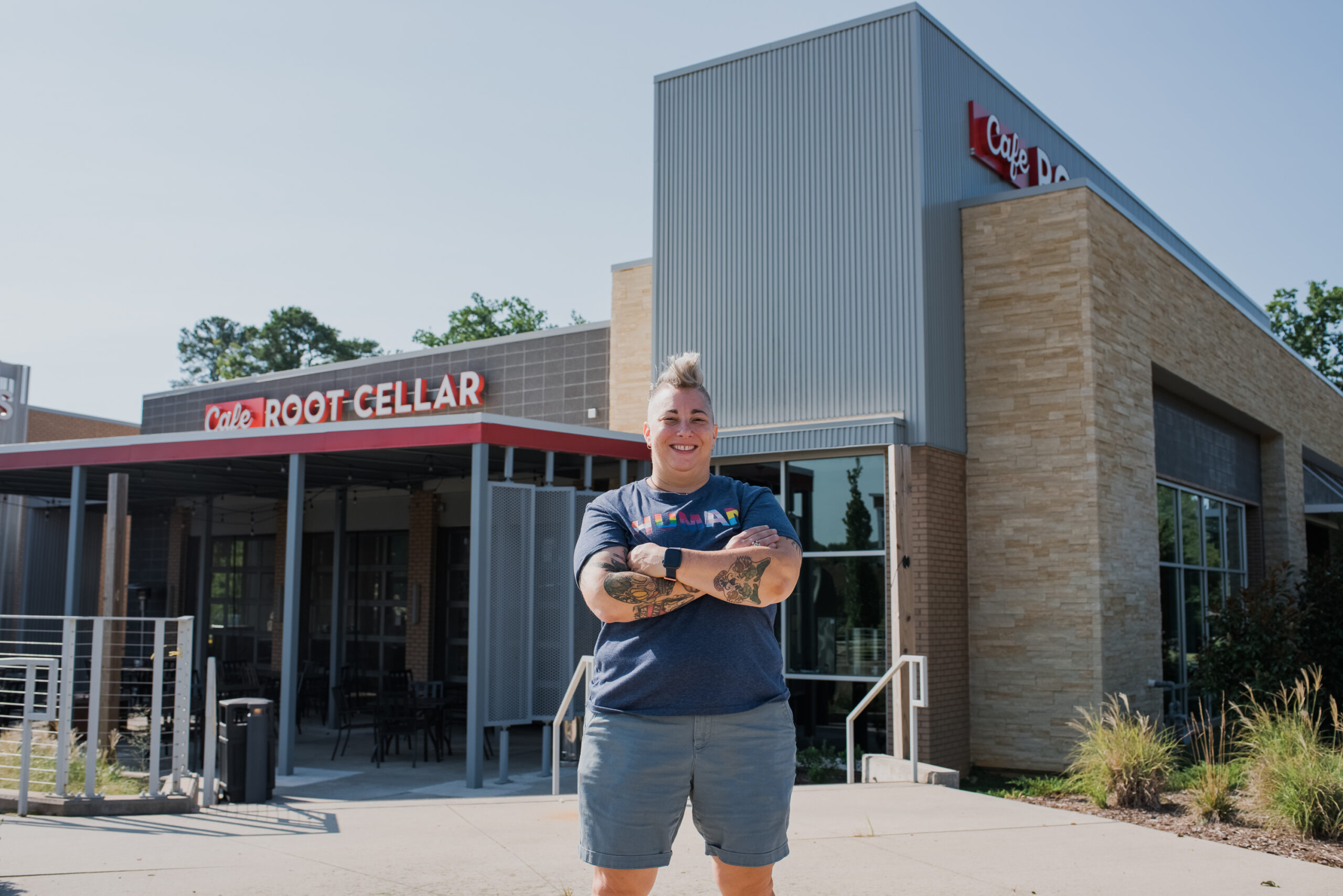


This is a well written article about a diligent person and her craft. Sera concerns herself with providing for one of the basic needs of all people…nutritious food. Whether this food is bought in her restaurant or shared from the community’s support through the Feed Well Fridges program she does it well with love.
Chef Sera never ceases to amaze me. Wonderful interview of such a creative and generous human being. Thanks for all that you do, Sera and Susan!
Beautifully captures the creative spirit and dedication of Sera Cuni, a local treasure who keeps the culinary world evolving and combines her extraordinary passion & talent with heart and gumption!
Sera is a Chatham County treasure and a true artist. Her food is always delicious and presented beautifully. And her personality is just contagiously happy.
Beside the Feed-Well Fridges she also is a great supporter of other food based non-profits in the county. CORA Food Pantry and The Quiltmakers Cafe are two I know of.
Was surprised this article didn’t mention all of her television appearances on food channels and that she recently won one of them.
There was so much fabulous to write about Sera that we couldn’t get it all in! Her Supermarket Stakeout win was fabulous–and fueled by her incredible creativity! Folks who don’t know about that can read more here: https://www.chathamnewsrecord.com/stories/pittsboro-chef-sera-cuni-uses-creativity-to-win-food-network-show,15974